July 25, 2022
Best Guide to Schönbrunn Zoo Animals & Their Preservation, Vienna
Conservation, Fauna, Guide, Tour
Top attractions:
The Best Zoo in Europe
Schönbrunn Zoo is certainly not shy of its titles. Built on 1752, it is the oldest operating Zoo in the whole world and now has been named the best zoo in Europe five consecutive times. Schönbrunn Zoo together with the whole palace was added to the UNESCO list of World Heritage Sites in 1996. Though it was started as a hobby for Emperor Franz I Stephan, today it proudly presents itself as a science-oriented zoo, focusing on the preservation of species and educating people. You can read more about the fascinating history of Schönbrunn in this article.
To its credit, Ural owls, being extinct in Austria, were re-settled in the country’s woods and the zoo helped to restore a totally extinct in the wild bearded vultures to Central Europe. The star of Schönbrunn Zoo – young elephant Kibali – was one of the first baby elephants born after artificial insemination in Europe. The zoo is also one of the few places that managed to breed giant pandas naturally. Schönbrunn Zoo is absolutely breaking the image of zoos being bad to animals. Quite the contrary.

Opened in 1752, Schönbrunn Zoo is the oldest operating zoo in the World. Photo by Alis Monte [CC BY-SA 4.0], via Connecting the Dots
EEP (European Endangered Species)
EEP is the European conservation breeding program for endangered species, coordinated by EAZA (European Aquarium and Zoo Community). The goal of this initiative is to meaningfully interbreed animals so the gene pool of the species doesn’t degrade. Only a genetically healthy population in human care, if necessary, produce viable young animals for resettlement projects.

In the past poaching for petting and zoos has decreased the wild population of red pandas, but today zoos cooperate to breed these animals and keep their genetic pool healthy. Photo by Alis Monte [CC BY-SA 4.0], via Connecting the Dots
Tickets to Schönbrunn Zoo
Schönbrunn is the most visited tourist destination in the whole of Austria and Schönbrunn Zoo gets a big chunk of that. It is natural that long waiting lines form in front of the ticket sales. Having in mind that there is probably too much to see in Schönbrunn Zoo within a day, wasting time is a pity. You can skip the lines by buying the ticket in advance online. The Skip-the-line Tickets for Schönbrunn Zoo will cost you € 24/person in 2022.
Vienna Pass
In case you are in Vienna for more than just Schönbrunn Zoo, it might be a wise idea to buy the multi-day Vienna Pass. It is possible to get a single day pass but I wouldn‘t recommend it for Schönbrunn Zoo as you probably won‘t have time for anything else, even the Schönbrunn itself if you want to give it a fair try.
The Vienna Pass has about 60 different popular attractions in the Capital of Austria included. You can get it either on Get Your Guide or on the Vienna Pass official website. Both start from 85€ for a single day and the price goes up to 189€ for six days in 2022.

Photo by Alis Monte [CC BY-SA 4.0], via Connecting the Dots
Like it or not but the actual frontier for the well-being of animals is fought at their homelands. Without the preservation of their natural habitat, there is no place for the animals to return to. The space is very limited and its inhabitants are very competitive & even combatant. Until we – humans find homeostasis with nature, breeding programs such as EEP are crucial for the species’ preservation and a reintroduction to their natural home.

Do you know that giant pandas has to eat bamboo 14hours a day? Photo by Alis Monte [CC BY-SA 4.0], via Connecting the Dots
Schönbrunn Zoo Details
- Location: Hietzing, Vienna
- Coordinates: 48°10′56″N 16°18′09″E
- Address: Maxingstraße 13b, 1130 Wien
- Built: July 31st, 1752
- UNESCO World Heritage Site: 1996
- Entrance fee: Adults – €22, children & disabled – €11, under 6 – free
- Opening hours: 9:00AM – 16:30/18:30
- Weather: Vienna forecast
- Best day to visit: Monday, Tuesday, Thursday, Friday & Sunday (March-October)
- Good accomondation: Hietzing, Penzing & Meidling
- Tickets: Skip-the-line Tickets for Schönbrunn Zoo
Map of Schönbrunn Zoo
How to get to Schönbrunn Zoo
Schönbrunn Zoo together with the rest of the palace is located between Meidling and Hietzing. Given its hunting grounds nature, the zoo is located a bit further from the Vienna City Center. Thankfully, the public transport connections are outstanding in the Capital of Austria, therefore, there won’t be a problem getting to Schönbrunn Zoo.
By Metro
The most convenient way to get to Schönbrunn Zoo is using the U4 metro line. There are two stations close to any of the entrances to the zoo: Schönbrunn and Hietzing. Personally, I always start from the Hietzing side and then exit through the other to enjoy Schönbrunn Palace and its gardens before leaving the area. U4 metro line intersects with other metro lines on these stations: U1 (Karlsplatz, Schwedenplatz), U2 (Karlsplatz, Schottenring), U3 (Landstrasse Wien Mitte) and U6 (Längenfeldgasse, Spittelau).
Pro tip: Vienna public transport is free with Vienna City Card and it also gives a discount to Schönbrunn Zoo.
By Tram or Bus
There are several tram and bus options but I don’t see any reason to use them instead of the U4 metro line unless you have a station right next to your doors. Trams running by Schönbrunn Palace include No. 60 (Westbahnhof – Liesing), No. 10 (Hernals – Hietzing) and No. 52 (Penzing – Speising). All the buses running from Hietzing Station are designed in the way to reach the parts of the districts, which are not covered by metro and trams. These buses include lines 56A, 56B, 58A and 58B.
By Car
Schönbrunn Palace is located right next to the city exit to A1 highway between Vienna and Salzburg. You can find the available parking lots on the map.
By Private Transfer
If you want better treatment than public transport, in Vienna – there is always an option. A driver of the flexible private transfer to Schönbrunn Zoo will pick you up and drop you off at your hotel. Skip-the-line Schönbrunn Zoo ticket is also included in the price, thus you don’t need to worry about anything, just enjoy your visit to Schönbrunn Zoo.
With GetYourGuide, you can cancel your orders up to 24h before the tour to get a full refund.

Sometimes you just want to sit and enjoy your day. Photo by Alis Monte [CC BY-SA 4.0], via Connecting the Dots
Feeding & Training Times 2022
- 10:00 Elephants Training without feeding (daily)
- 10:30 Sea Lions Feeding (Wednesdays-Mondays)
- 11:00 Humboldt penguin (Wednesdays-Mondays)
- 11:30 Rockhopper Penguins Feeding (Wednesdays-Mondays)
- 11:30 Arctic Wolves Feeding (Mondays, Tuesdays, Thursdays, Fridays & Sundays)
- 13:00 Northern Bald Ibis Feeding (daily)
- 13:30 Barbary Sheep & Barbary Macaques Feeding (daily)
- 14:00 Oriental Small-Clawed Otters Feeding (daily)
- 14:00 Indian Rhinos Feeding (daily from April to October)
- 14:30 Giant Anteaters, Capybaras, Vicunas, Rheas & Seriemas Feeding (daily from April to October)
- 15:00 Siberian Tigers Feeding (Mondays, Tuesdays, Thursdays, Fridays & Sundays)
- 15:00 Western black-and-white Colobus Feeding (Wednesdays & Saturdays)
- 15:30 Sea Lions Feeding (daily)
- 16:00 Koalas Feeding (daily)
Source: Schönbrunn Zoo

Photo by Alis Monte [CC BY-SA 4.0], via Connecting the Dots
Schönbrunn Zoo Animals List
Over animals of species find Schönbrunn Zoo as their home. While it is impossible to name every prairie dog of the zoo, at least I can give the list of star animals in Schönbrunn Zoo, you certainly don’t want to miss out. That doesn’t mean the others are not worth your attention. I’m pretty sure that some of the best moments in the zoo will be spent with the smaller animals. Seriously, go see prairie dogs!

Spectacled bears are the only bears native to South America and the biggest carnivores in the whole continent. Photo by Alis Monte [CC BY-SA 4.0], via Connecting the Dots
1. Polar Bears: Finja and Her Parents
Polar bears are probably one of the most iconic animals in the world. Unfortunately, they are becoming the symbol of the damage done to the polar ice caps – the natural habitat to many animal species – because of climate change.
Neverminded their frequent appearance in popular culture, these creatures are dangerous to humans. Due to their harsh natural habitat and size, polar bears wouldn’t have a second thought before attacking people. They are apex predators and as matter of a fact – the largest land carnivore species. Male polar bears weigh about half a ton and could grow up to 3m (10ft) tall. Despite all the impressive features of these majestic animals, their habitat is very vulnerable to human activities and so is the well-being of polar bears.

Born on 9th November, Finja is the zoo’s new darling. Photo by Alis Monte [CC BY-SA 4.0], via Connecting the Dots
Finja’s mother, Nora is a 7-year-old polar bear, who came to Schönbrunn Zoo from Tallinn in 2017. In 2019, she have mated with Ranzo, a 10-year old superstar from Finland. He was the first offspring polar bear in his country. On 9th November 2019, the polar bears got their firstborn, Finja(F) and she is the star of Schönbrunn Zoo. For the first three months, the baby polar bear was only with her mother in a small room, resembling ice caves, where polar bears raise their young for the first seven months.
Now Finja is out there in the Polar Bear World and could be observed playing by the visitors of Schönbrunn Zoo. Polar Bear World is a 1,700 m2 facility with 630,000l of water for the polar bears to enjoy. It has opened only in 2014 and like all modern buildings in Schönbrunn Zoo, it is very self-sufficient. The water within needs to be changed only once a year. For the educational sections of Polar Bear World and the important work done for the species by Schönbrunn Zoo, PBI(Polar Bear International) has appointed it as the Arctic ambassador centre.
2. African Elephants
African bush elephants are the biggest land mammals in the world. The biggest of them all are the male bulls. Without a doubt, it is difficult to keep them in zoos and for the very same reason, it is rare to see one held captive. Most of them are the individuals taken from circuses of poorly maintained zoos. One such elephant bull – Pambo – used to live in Schönbrunn Zoo a decade ago, but until late 2020 all of the elephants living in Schönbrunn Zoo were female, including Pambo’s daughter.
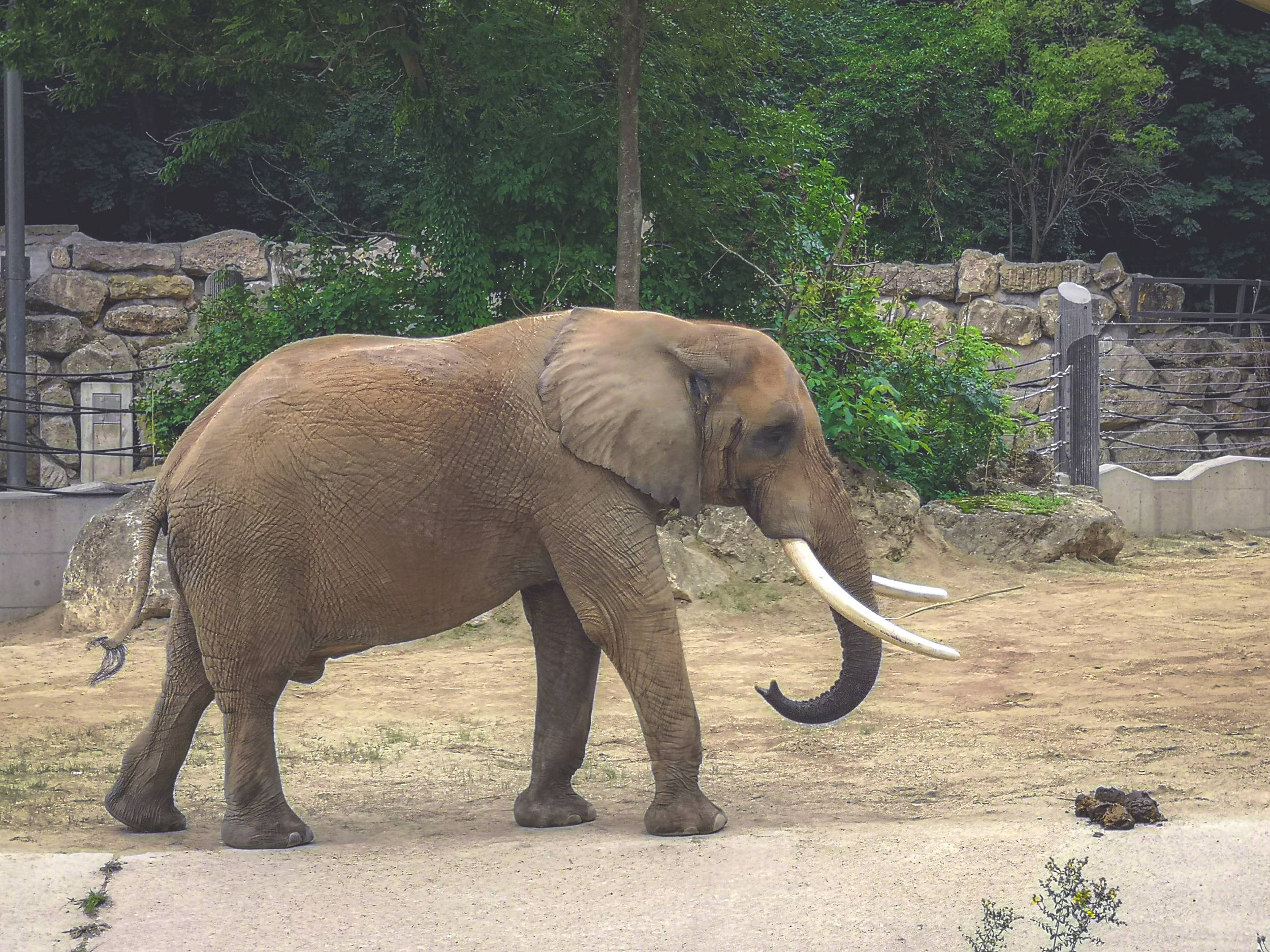
The newest elephant in Schönbrunn Zoo is four-and-a-half ton bull Tembo. Photo by Alis Monte [CC BY-SA 4.0], via Connecting the Dots
Tonga is the leading female and she has two very special daughters: Mongu and Iqhwa. The latter was the first elephant born after insemination with the frozen sperm from a wild bull and the other is the child of the only male, who used to live in Schönbrunn Zoo in recent days. Drumbo is the oldest elephant living in Schönbrunn Zoo, in a matter of fact she is so old that she was born in 1974 in a country that no longer exists – Rhodesia. Numbi is a beautiful elephant and the mother of Kibali – the youngest elephant living in Schönbrunn Zoo.

Born in 1974, today’s Zimbabwe, Drumbo is the oldest elephant in Schönbrunn Zoo. Photo by Alis Monte [CC BY-SA 4.0], via Connecting the Dots
Despite their size, these unique animals have been listed as vulnerable for at least two decades. Due to their nomadic lifestyle, it is hard to protect these species. Only 30% of elephants’ habitat is protected therefore encounter with local humans and poachers is inevitable. Because of the continuous effort of various conservation projects the toleration of local people towards these animals has increased. Also, the researchers have shown that playing a recorded sound of wild bees, keeps the elephants from the human settlements. Thanks to all the endeavours, the populations seem to bounce back by 4% every year since 2004.

R.I.P. Kibali (2019.07.13 – 2021.07.09) Photo by Alis Monte [CC BY-SA 4.0], via Connecting the Dots
The recent year has brought many changes to the elephants in Schönbrunn Zoo. First, the oldcomer Drumbo has left to the Czech Republic due to increasing tensions with Matriarch Tonga. Soon, Schönbrunn Zoo got a newcomer from Dresden Zoo – a four-and-a-half ton bull Tembo. This looked like a promising change for everybody, but in July the whole of Vienna was shocked by the sudden death of 2-year-old elephant girl Kibali. She was a local hero during the CoVID-19 times. Throughout the pandemic, people were asked to keep a distance of a baby elephant from other people. This was a tragedy not only for Schönbrunn Zoo but for the whole city. She was widely mourned and will be remembered as a positive spark during very dark times.
3. Giant Pandas
Giant Pandas has an important but unfortunate role of being the international symbol for animal conservation. During the last survey, conducted by local authorities of giant pandas natural habitat, it was reported that there are only 1,864 individuals left living out in the wild. To protect these majestic animals Schönbrunn Zoo work together with CWCA(China Wildlife Conservation Association) since 2003. Schönbrunn Zoo has already played its part by being able to naturally breed giant pandas several times now including the famous twins Fu Fang (Happy Phoenix) and Fu Ban (Happy Companion).

Yang Yang(F) and Yuan Yuan(M) are the two Pandas currently living in Schönbrunn Zoo. Photo by Alis Monte [CC BY-SA 4.0], via Connecting the Dots
The mother of all baby pandas born in Schönbrunn Zoo is 20-year-old Yang Yang (Sunshine). But their father Long Hui (Dragon Sign) has passed away at the age of 16. Though all five babies were moved to China, their mother is still living in Schönbrunn Zoo with her potential new mate Yuan Yuan.
Besides the zoo’s huge success in a giant panda conservation program, Schönbrunn Zoo also supports the cause financially and scientifically. The firstborn Fu Long (Happy Dragon) was the first naturally bred giant panda baby boy in Europe.
4. Orangutans
In Schönbrunn Zoo, Orangutans have their own separate building, which was probably bought off nearby Hietzing in order to give all the required space for these magnificent great apes. The focus of the whole facility is oriented towards the education of its visitors.

Orangutans are the third-closest living human relative. Photo by Alis Monte [CC BY-SA 4.0], via Connecting the Dots
The natural habitat of Orangutans is rapidly decreasing due to the plantation of infamous palm oil. If somebody was living all this time under a rock, there is more than enough information in Schönbrunn Zoo about this disaster, caused by us, humans, to the natural habitat of many species, including Orangutans. Unwillingly, these great apes became the face of the campaign against the deforestation and plantation of palm oil.
Visiting these majestic creatures in Schönbrunn Zoo will leave absolutely nobody apathetic to the cause. It is a great place to know Orangutans better. The individuals living here will make you cry from both joy and sadness. These orangutans are like ambassadors of the entire species and they have a lot to say. It is our responsibility to answer their calls. Orangutans, after all, are our third-closest living relative in the world.

Since late 2020, 5 orangutans are living in Schönbrunn Zoo. Photo by Alis Monte [CC BY-SA 4.0], via Connecting the Dots
Currently there are five orangutans living in Schönbrunn Zoo: Vladimir(M), Mota(F), Sol(F), Sari(F) and Surya(F). The last two are much younger than the other orangutans and they came just last year during the lockdown of the pandemic. The zookeeper has hopes that the newcomers will change the momentum and we could see an orangutan offspring in Schönbrunn Zoo! So far, Vladimir has shown interest in the new females but we’ll have to wait for the first baby orangutan.
5. Rhinoceros
The Indian rhinoceros (Rhinoceros unicornis) are often referred to as the greater one-horned rhinos. As the name suggests these species have only one horn but this unique appearance is both a gift and a curse. Throughout the centuries these magnificent animals have been plagued by human hunting and poaching. About a hundred years Indian rhinos were driven close to extinction. Though the hunting has stopped ever since and many initiated projects to preserve these species, due to the popularity of their horn in traditional Chinese medicine and among trophy collectors, the poachers remain a huge threat to Indian rhinoceros.

Sundari was not accepted by its kind and eventually became what was known as “problem animals” to the locals. Photo by Alis Monte [CC BY-SA 4.0], via Connecting the Dots
Sundari(F) and Jange(M), or Beauty and Strong, are the two rhinoceros currently living in Schönbrunn Zoo. Both moved here from Nepal under the blessing of Royal Chitwan National Park, which took care of them ever since they were rescued from poachers. The rhinoceros share a similar unfortunate story of their early life. Both became orphans at a young age after poachers killed their mothers.
This is so common that entire populations in some areas sometimes get killed within a year. Luckily, Sundari and Jange were rescued by the local rangers but even after they have healed their wounds, the rhinoceros had no success finding friends among their kind. Both turned to humans to tackle loneliness but despite the tolerance of the local people it was decided to find a new home for Sundari and Jange before something tragic happened.
Ever since, together with other Asian mammals, the two rhinoceros are living in the 6,000m² area of Schönbrunn Zoo, known as the Rhino Park.
6. Giraffes
Everyone knows these majestic animals. Giraffe natural habitat range throughout sub-Saharan Africa and although traditionally it is considered to be one species (Giraffa Camelopardalis), up to 8 species has been described so far. These gorgeous animals are highly social and communicate within a deep infrasonic range, which is highly useful for communicating in the long distances of the vast expanse of the African savanna. Seven other giraffe species are extinct and the extant ones are vulnerable to the change caused by humans to their natural habitat.
Currently, three giraffes live in the Giraffe Park of Schönbrunn Zoo. The usual residents of the zoo are Rita (F), Carla (F) & Kimbar (M) – the oldest giraffe bull in Europe. In 2013, Lubango(M) the son of Kimbar and Rita moved to Naples Zoo after he reached his adolescence because he could start arguing with his father over who is the boss here.

The Giraffe Park was awarded the City of Vienna’s Environmental Award in 2016. Photo by Alis Monte [CC BY-SA 4.0], via Connecting the Dots
The building where the giraffes live is a sight worth seeing by itself. The Giraffe Park is great proof that modern architecture could be mixed with baroque and despite its style – the building is energy and heat self-sufficient. In 2016, Giraffe Park received the City of Vienna’s Environmental Award.
The closest relative of giraffes is Okapi, also known as a forest giraffe. Together they form the so-called giraffe-like group.
7. Asian Big Cats
There are 36 species of cats. It is not a surprise that the biggest content of them all shares a decent portion of these species. Some of the most iconic big wild cats from Asia could be found on the list of animals living in Schönbrunn Zoo.
Siberian Tigers
Currently, the only Siberian tiger female living in Schönbrunn Zoo, Ina(F) was born here as a part of EPP in June 2008. Though compared to lions, they might look not as big as expected, Siberian tigers are the biggest cat species in the world. in 2021 May a 2-year-old male Siberian tiger Pepe has moved to Schönbrunn Zoo from Lisbon and joined Ina for a potential romance. You can distinguish them by size, male Siberian tigers can grow almost as much the weight of the female but because of his age, Pepe is just a bit taller than Ina.

Every individual is a significant portion of the whole Siberian tiger population. There are less than 600 of these beautiful cats remaining in the wild. Photo by Alis Monte [CC BY-SA 4.0], via Connecting the Dots
Siberian tigers are closely related to the now extinct Caspian tiger of whom the last individual died in 2003. This proves that even populations of such an apex predator like Siberian tigers could be driven out to complete extinction. Illegal hunting and the loss of their natural habitat is the main reason of the decline of the population of these majestic animals. The healthy genetics of the population in captivity is very important to the preservation of Siberian tigers. There are only about half a thousand individuals living in their natural habitat.
Amur Leopards
Infamously known as the World’s rarest cat, the critically endangered Amur leopards are on their way to bounce back the populations. In 2015, Leopard National Park announced that the numbers have doubled since 2007 but the situation is not as good as it sounds. Despite the change of direction, the total population of Amur leopards in the wild remain just under 60.

Like their close relatives, amur leopard enjoy life in solitude and occupy strict territories. Photo by Alis Monte [CC BY-SA 4.0], via Connecting the Dots
The good news is that currently, about 200 individuals are living in zoos under a conservation breeding program. That includes Ida(F) and Piotr(M), who just had two kitties born right here in Schönbrunn Zoo in 2018. Reintroductions of these rare cats to their natural habitat are already under the plan.
8. African Big Cats
Despite not being the largest cat, lions are best known as the Kings of all animals. Maybe it is due to their lazy lifestyle. Lions spend about 20 hours a day resting and hunt mostly at night and in groups. This behaviour probably evolved as they tried to outcompete the relatives of hyenas – sabre-tooth tigers, who hunted alone and during the day.

Lions are sleeping, for the most part, nevertheless, it is a sight to see. Photo by Alis Monte [CC BY-SA 4.0], via Connecting the Dots
Even the Kings of all animals is not enough to be affected by human expansion and hunting. These species are now endangered as the territories, where they live have greatly shrunk.
Cheetahs
It is no secret that cheetahs at 90km/h are the fastest four-legged animals in the world. The speed is surprising but what is even more fascinating is that no other cat use this tactic for hunting. The unusual method of hunting proved to be so successful that before humans have invented guns, cheetah occupied vast territories including the whole of Africa and large parts from West Asia to India. When it comes to hunting grounds, cheetahs appear to be much less selective compared to other big cats, but they also cover much bigger territories. There are three times fewer cheetahs in the same area compared to lions or leopards.

Cheetahs require three times larger hunting areas than lions or leopards. Photo by Alis Monte [CC BY-SA 4.0], via Connecting the Dots
Despite their evolutionary successes, cheetahs populations are endangered. The main danger to the populations of these cats is the loss of their natural habitat due to the competition for the land with humans. Schönbrunn Zoo is one of the few places, which managed to successfully breed these magnificent animals. The main concern is their natural lifestyle requires vast areas, which virtually cannot be given by any zoo. Schönbrunn Zoo is surprisingly good at breeding cheetahs. The most recent quadruple just turned one year old on June 22nd. Their mother no longer needs to keep an eye on them.
9. Koalas
Due to their external appearance, these lovely creatures are often referred to as “koala bears” but, like any other marsupial, they have nothing to do with the descriptions of placental mammals we are used to. In fact, biologically, a simple mice is a closer relative of actual bears than koalas. The closest living relative of these charming marsupials are wombats.

Once koalas were completely eradicated in Southern Australia in 1920 but slowly reintroduced ever since. Photo by Alis Monte [CC BY-SA 4.0], via Connecting the Dots
Currently, there are three koalas living in Schönbrunn Zoo: Wirri Wirri(M), Bunji(F) and their long awaited baby koala Millaa Millaa(F). Koala Mama was brought to Schönbrunn Zoo from Lisbon in 2017 as a part of EPP as a suitable partner for the male living here. Though these solitary animals showed some interest in each other from the start, Schönbrunn Zoo had to wait for the first koala baby for 4 years.
Despite many efforts to reintroduce koalas to the Australian regions, where these marsupials used to live, the species remain vulnerable. Though koala hunting was stopped, their natural habitat – eucalypt woodlands – is shrinking and so are their numbers. Schönbrunn Zoo has started a eucalypt plantation right here in Vienna. Buying koala souvenirs from the zoo funds the project.
10. Monkeys
Though most of the monkeys in Schönbrunn Zoo could be found in affenhaus (the monkey house), some other primate species like white-handed gibbons, Barbary macaques and ring-tailed lemurs could be found outside of it. Originally the building was used for swimming and wading but in 1841 it was rebuilt as the monkey house. Ever since orangutans were moved to the much bigger facility – ORANG.erie in 2009, affenhaus was converted to house six monkey species and some other animals.

Sipura with her 5 month-old offspring. The little one has started learning to climb the trees just two months ago. Photo by Alis Monte [CC BY-SA 4.0], via Connecting the Dots
Like all of their relatives, white-handed gibbons are endangered species. Inhabiting the evergreen lush forests of Southeast Asia, they are constantly being pushed in by human-caused deforestation of their natural habitat. Due to their appearance, these beautiful animals are experiencing a massive poaching problem as well. In 2019, Schönbrunn Zoo has named white-handed gibbons the “Zoo Animals of the Year”. This campaign helped to raise funds and together with their partners, the Zoo was able to provide more than €115,000 to create protected areas in Laos and Vietnam and support rangers in the fight against poaching.
In 2019 a baby gibbon was born, to this day it is possible to see how his father is trading the little one. The white gibbon area is probably my favourite place in Schönbrunn Zoo.
11. Hippotamus
Hippos spend most of their time cooling off in the water. They can shut their ears, close their eyes and nose, and spend on average five minutes underwater. Hippotamus are actually the closest relative of whales, it is no surprise they spend so much time in the water. They even give birth to baby hippos in the water but immediately heaves it to the surface by their snouts for the first breath in their life. Baby hippos are no joke, at their birth, they already weight about 50 kg!

Hippos are the closest living relative of whales. Photo by Alis Monte [CC BY-SA 4.0], via Connecting the Dots
The first hippos arrived to Schönbrunn Zoo in 1909, they living conditions have greatly increased ever since. Now they have a 200.000 l indoor pool and 400.000 l outdoor pool. Both pools have a modern and eco-friendly filtering system, which greatly reduces water and electricity consumption.
Currently, two Hippotamus live in Schönbrunn Zoo: Arca(F) and her son Kimbuku(M). His father Ali(M) peacefully passed away in 2019 after a long life in the zoo. He was a rock-solid in character and in statue, he lived in the Schonbrunn Zoo since 1967 and is a big part of the zoo.

Barbary macaques and barbary sheeps have an unusual friendship. Photo by Alis Monte [CC BY-SA 4.0], via Connecting the Dots
My Impressions of Schönbrunn Zoo
Schönbrunn Zoo might not be the biggest one in the world but having in mind that it is located within an imperial palace, its pretty awesome! If you want to visit every corner of it – be ready to walk about 10km. In reality, you won’t even notice because the animals will keep you delighted. It certainly does feel like they genuinely enjoy themselves living here, in Schönbrunn Zoo, and that is easily transferred to us – humans.

Despite their big numbers, prairie dogs natural numbers are threatened by the expansion of agriculture and persecution. Photo by Alis Monte [CC BY-SA 4.0], via Connecting the Dots
What amazes me is that probably not a single animal living in Schönbrunn Zoo is here without a reason. There is much much more happening beyond the surface of the entertaining nature of the zoo. The modern living areas for animals are built in a way to mimic their natural habitat. This is also is used for the research. The better we understand the animals – the better we can rebuild their home environments.
The major reason for many endangered species is the loss of their natural habitat. Until this problem is solved, projects like EPP are crucial to ensure the survival of many gorgeous animals. One thing I really love about this place is that, even without knowing it, its visitors are taking a part in the preservation of the species living in Schönbrunn Zoo.
Photo Gallery of Schönbrunn Zoo
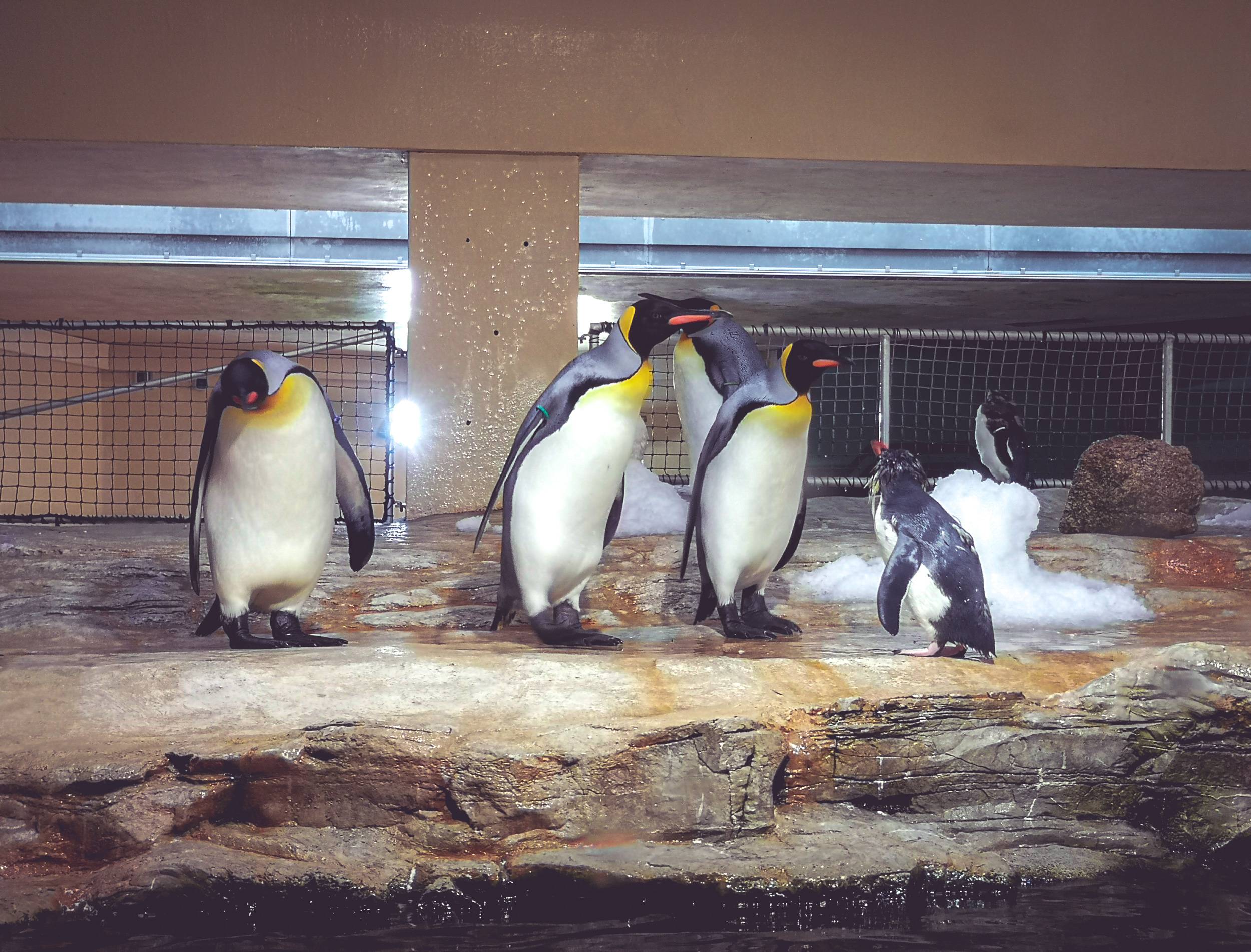
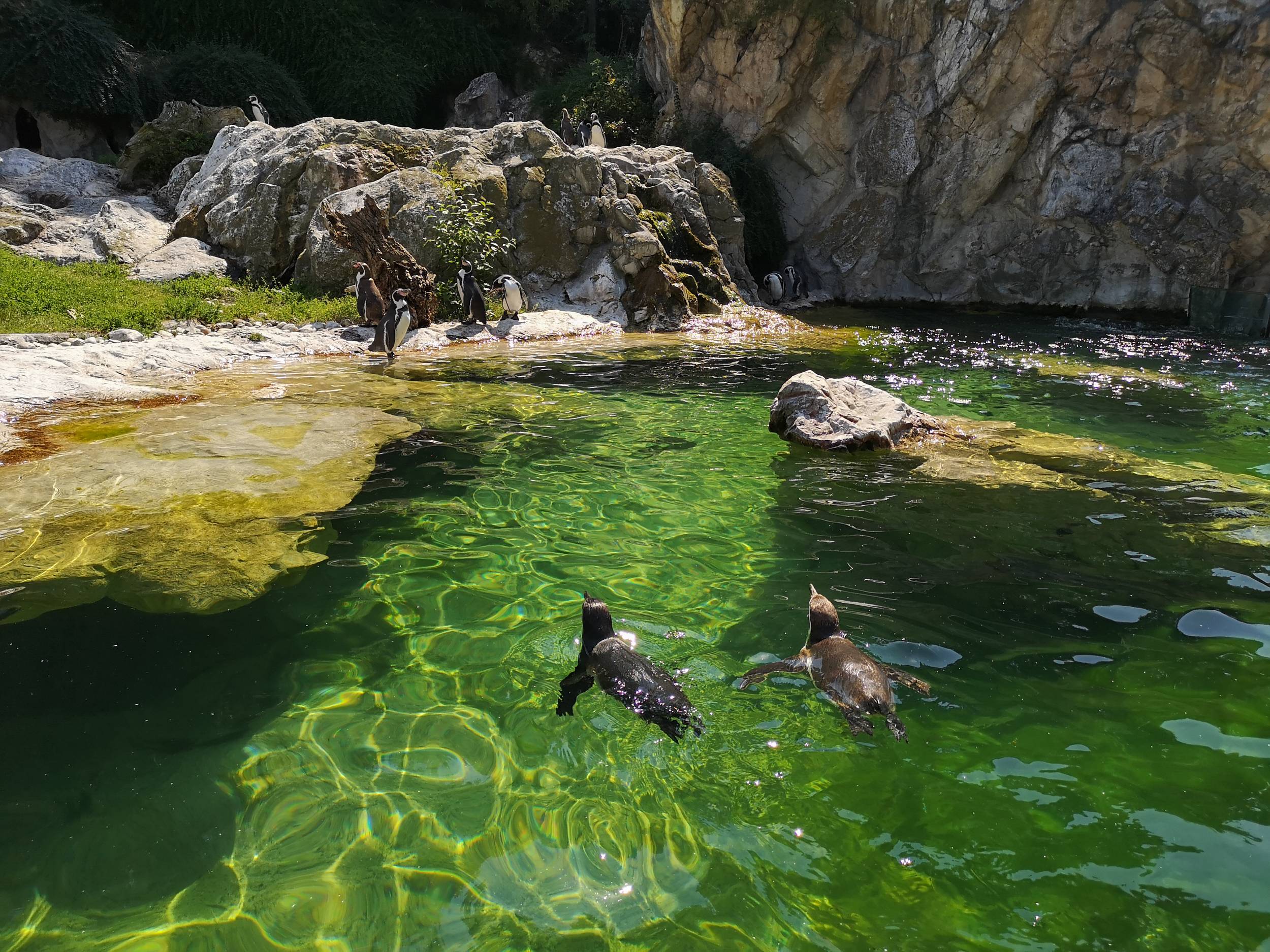
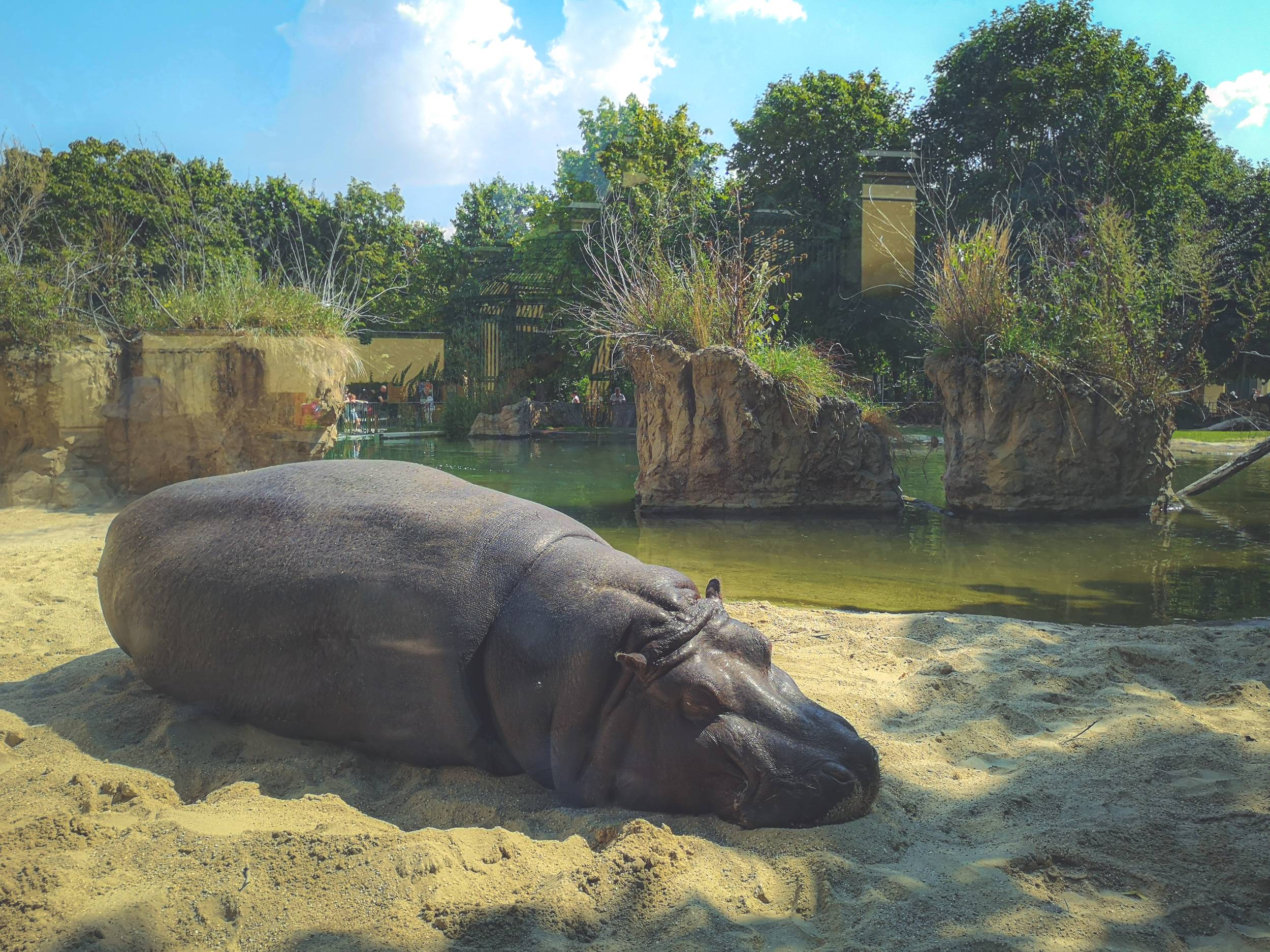
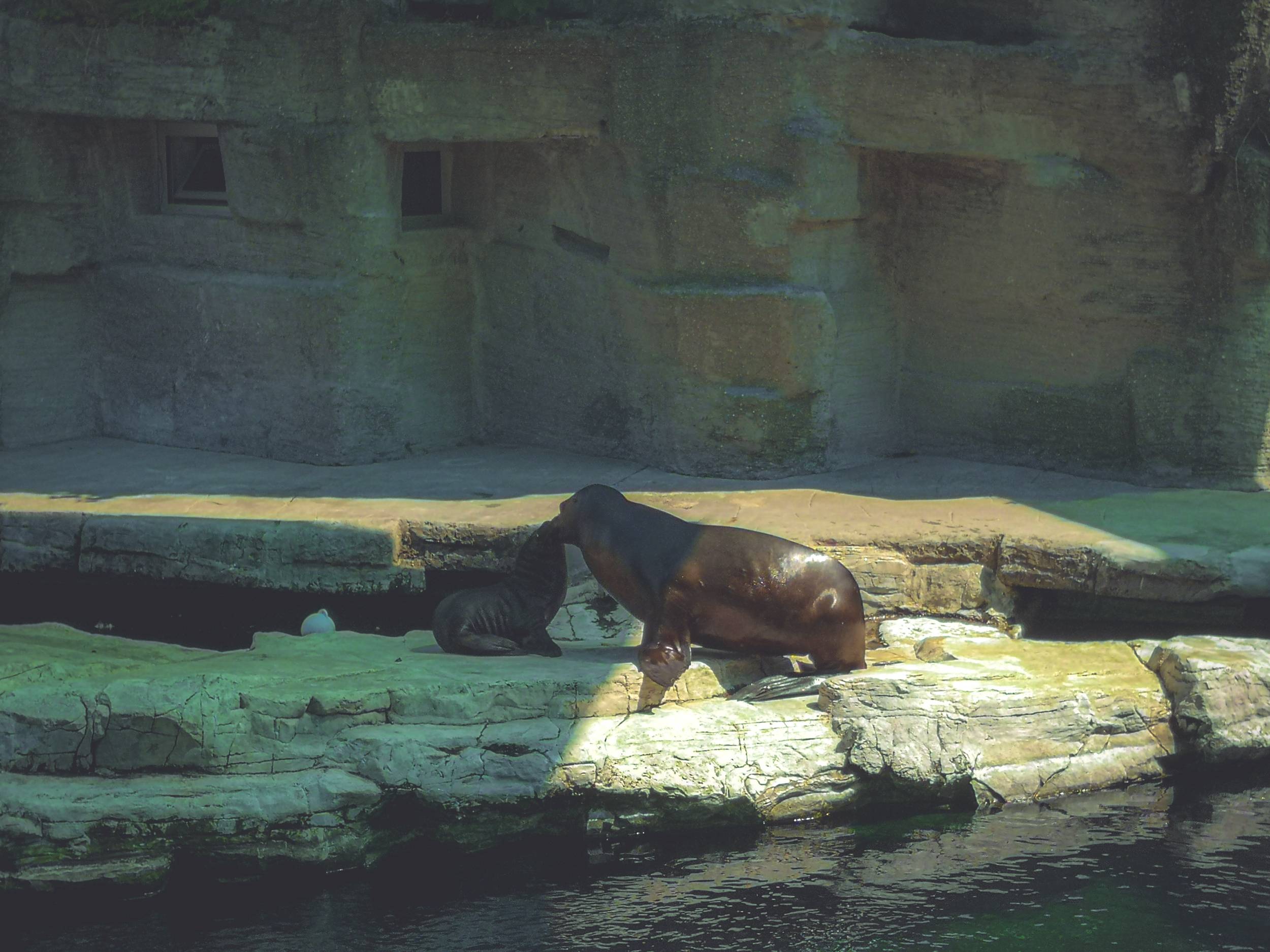
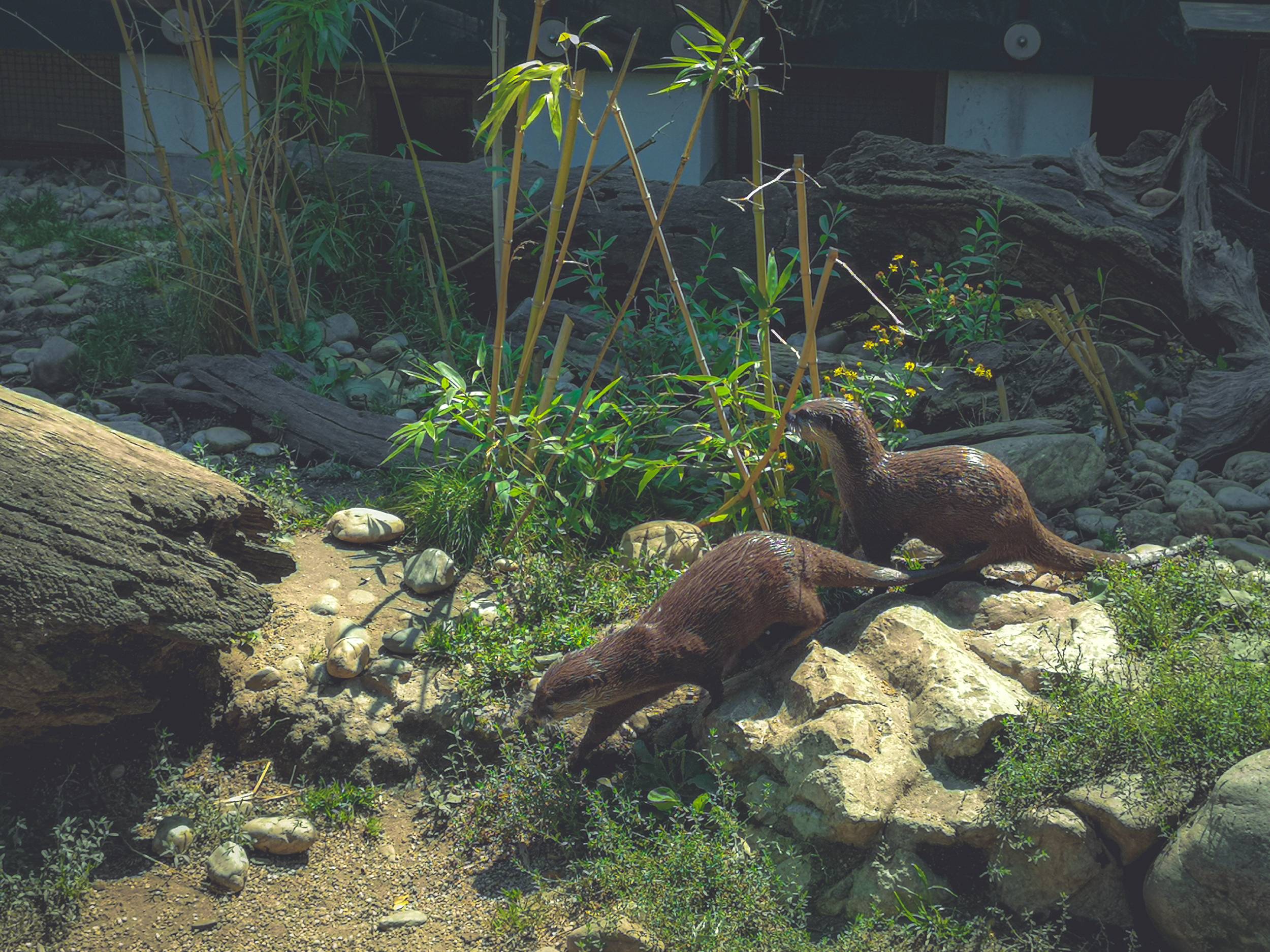
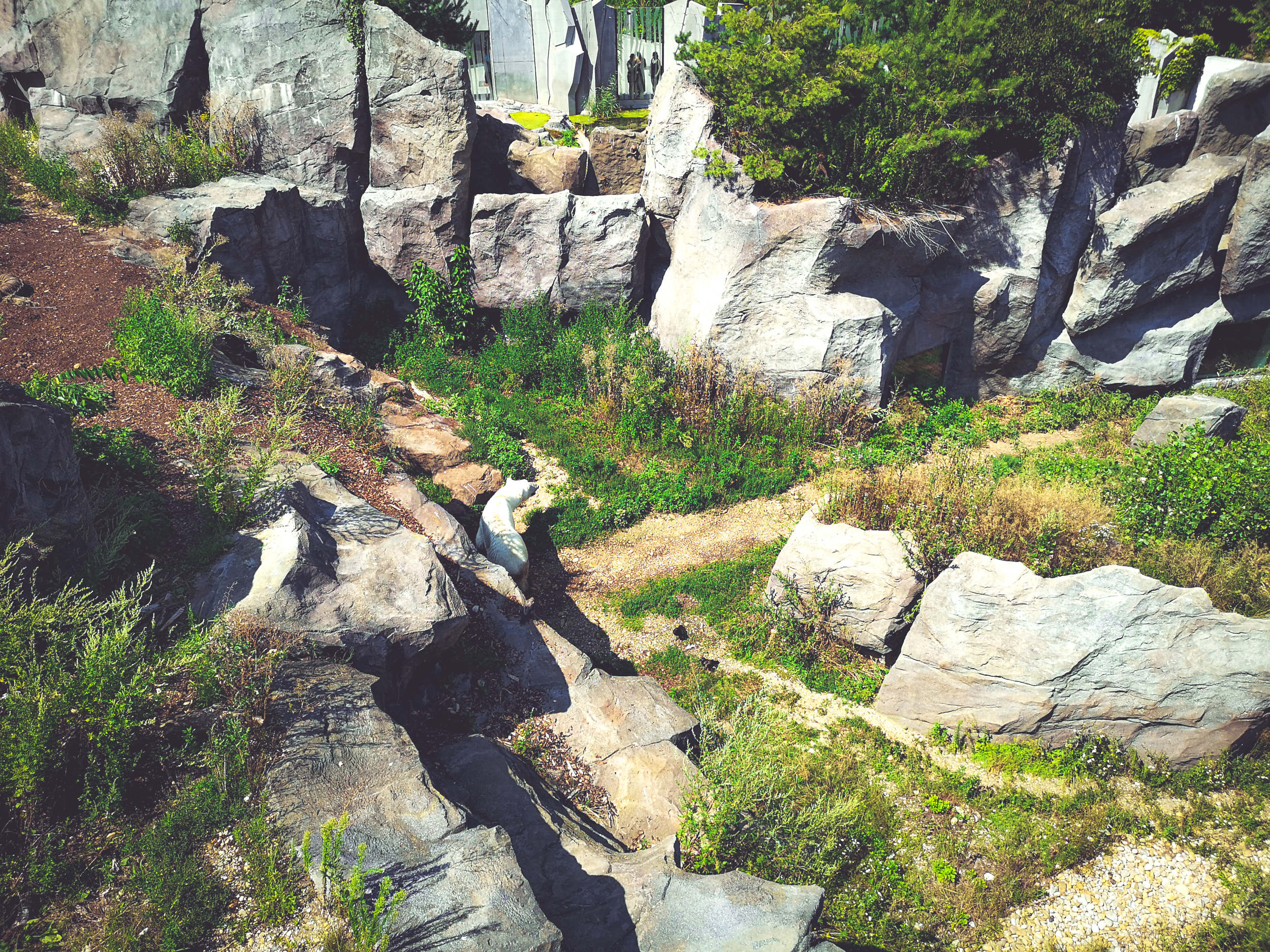
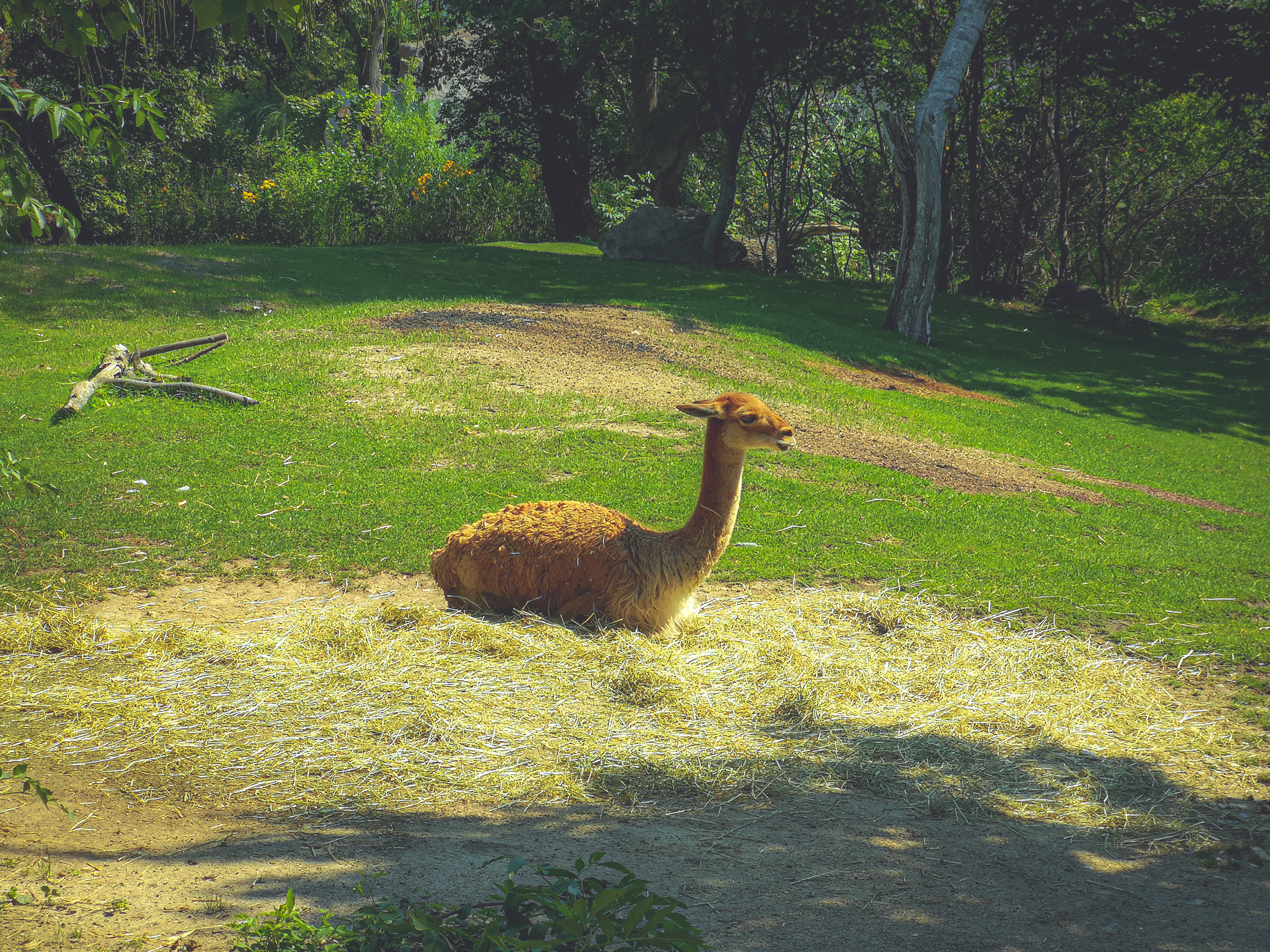

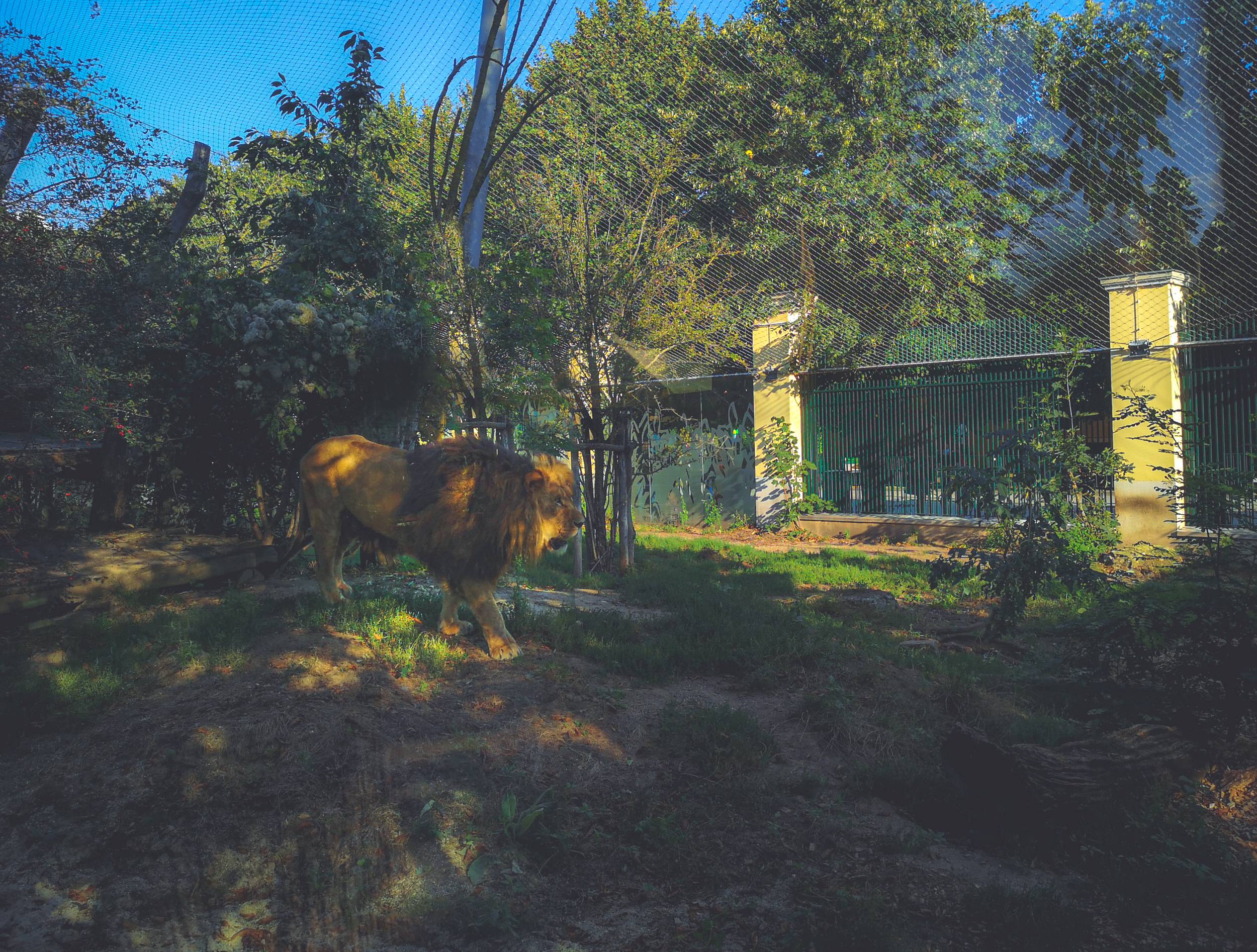




The two hippos Arca(F) and her offspring Kimbuku live in the zoo. Photo by Alis Monte [CC BY-SA 4.0], via Connecting the Dots
Frequently Asked Questions
How big is Vienna zoo?
Schönbrunn Zoo is 17 hectares or 170,000 sq. m. One day is barely enough to see most of it.
What country has the oldest zoo in the world?
The oldest operating zoo in the world is Schönbrunn Tiergarten in Vienna. The zoo and botanic garden were founded by Emperor Franz I Stephan in 1752.
How do I get to Vienna zoo?
The most convenient way to get to Schönbrunn Zoo is by U4 metro line.
Does Vienna Zoo have pandas?
Schönbrunn Tiergarten is among a very short list of Zoos, where great pandas live.
What city has the oldest zoo in the world and still in use today?
Viena hosts the oldest operating in the world. Schönbrunn zoo and botanic garden were founded by Emperor Franz I Stephan in 1752.